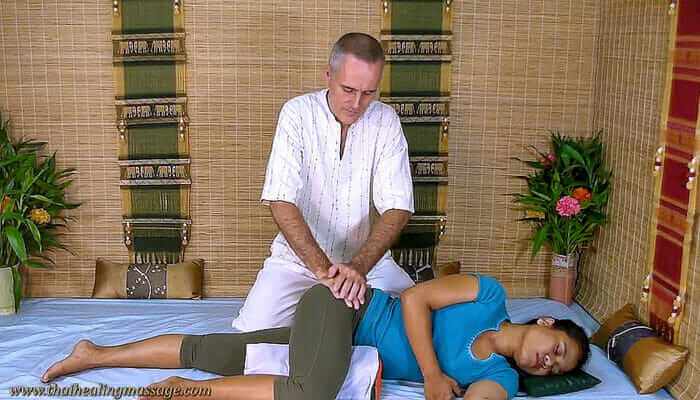The spinal cord within the backbone carries messages to and from the brain via a network of nerves. Nerves branch off from the spinal cord to service different parts of the body, but one of the areas that is more prone to nerve problems is the lower back. It is here that herniated discs are likely to occur, and the sciatic nerve is often affected by pressure from a damaged disc.
Another source of sciatica lies in the piriformis muscle. This muscle is located in the area of the hip and helps control range of motion. The piriformis muscle will often go into spasms when rigorous exercise has been engaged in, and this form of sciatica is usually seen in athletes. The pain will be felt deeply in the buttocks and can be severe.
The sciatic nerves branch out into the legs from the lower back, and these are among the largest nerves in the body. Damage to the nerves will cause pain not only in the hips, but also in the buttocks, thigh, and knee, particularly along the back of the calf and thigh. While pressure on the sciatic nerve is the most common cause of sciatica, infections, tumors, and muscular strains can also result in problems with the nerve.
How Sciatica Can Make You Miserable
Varying degrees of pain are associated with sciatica, and while sciatica pain can sometimes be minor, it can also include excruciating pain, throbbing pain, and pain that can best be described as ‘electrical jolts’. Sciatica sufferers can also experience numbness in the affected leg, along with difficulty in walking, caused not only by pain but also by muscular weakness. Sitting for long periods of time can accentuate sciatica pain, and even coughing or sneezing can add to the discomfort.
Mild cases of this condition often resolve on their own, but more advanced sciatica will require intervention by professionals. Because sciatica can, in rare instances, be caused by tumors, it’s important to see your physician when the pain begins. Over the counter pain relievers such as aspirin or acetaminophen can provide relief if the pain is not severe. Those who have trouble with their bodily functions should see a doctor immediately. Professional help should also be sought if sciatica develops after a fall or other trauma.
Sciatica Treatments
There are a number of options available for treating sciatica, ranging from conventional treatments such as steroidal medications, narcotic pain relievers, muscle relaxants, or anti-depressants. Surgery will be called for to treat extreme, prolonged pain or when incontinence is present – bone spurs or badly herniated discs must often be repaired surgically.
Fortunately, one of the best ways to control and heal sciatica is through remedial massage.
Controlled studies have proven that massage causes noticeable improvement when used for a two month period. Many of those who received massage reported that the pain had disappeared completely.
The release of endorphins that occurs during massage helps to ease pain naturally.
Massage is perfect for relaxing muscles that have become tightened up as a response to pain, relieving some of the pressure on the sciatic nerve, especially when used on the lower back region.
Because massage increases circulation, more blood will be brought to the area to speed the healing process.
Massage after Sciatica Surgery
For those who are unable to respond to less invasive treatments, or who have lost control of their bowels and bladder, surgery may represent the only viable solution. However, following surgery, as soon as the physician gives the okay, massage can assist with the healing process.
Hospital studies have proven the patients who receive massage after surgery require less pain medication, have a more upbeat outlook, and are better able to sleep. Since massage also stimulates the immune system, healing from sciatica surgery is accelerated too.
Don’t forget that usually in these type of situations driving or sitting for prolonged periods will aggravate the pain.
